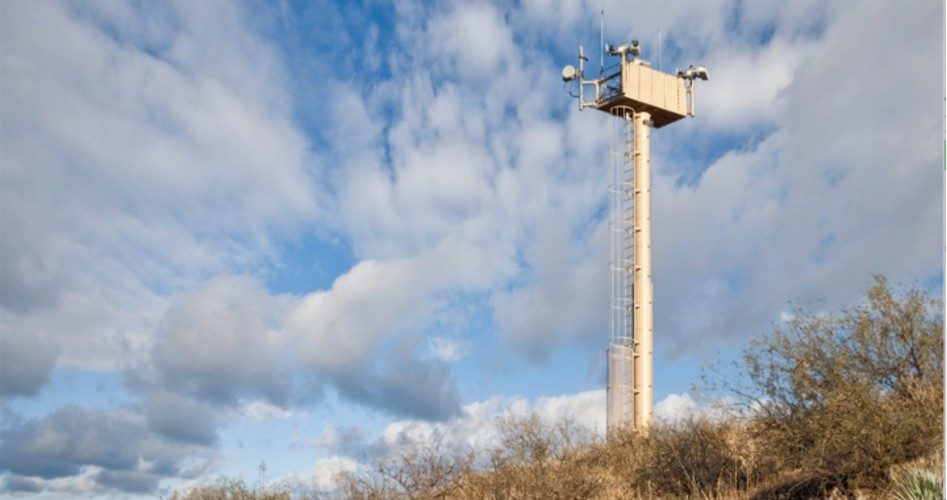
Some hi-tech companies have proposed building “smart walls” that use radar and sensors along sections of the southern border, particularly in sparely populated areas.
The standoff between Democrats in the House of Representatives and President Trump over appropriating the $5.7 billion Trump wanted for his border wall was based on the concept that all of the wall would be an imposing steel and concrete barrier. However, some hi-tech companies have proposed building “virtual walls” or “smart walls” along sections of the border, which would basically be electronic fences using radar, sensors, motion-activated cameras and lidar (a technology used in self-driving vehicles) supplemented by aerial surveillance using drones.
A March 24 report in the San Diego Union-Tribune explored some of the technology being proposed for such “smart walls,” and under what circumstances they might be not only cheaper, but more effective than building concrete and steel barriers. The reporter noted:
Although even the strongest proponents for such a technological solution admit physical barriers are likely best in urban areas such as San Diego and El Paso, they see a virtual wall as a cheaper and more effective way to police much of the rest of the 2,000-mile southwest border.
The report noted that U.S. Customs and Border Protection has requested that $223 million of its fiscal 2019 budget be used for technology improvements, unlike the border wall, such funding might have bipartisan support.
However, hi-tech walls have not always worked in all places. The Union-Tribune quoted from an interview it conducted last week with Alan Bersin, who was appointed U.S. Customs and Border Protection commissioner from 2010 to 2011. Bersin told the newspaper that using technology to safeguard the border did not work well under his watch.
“I terminated [an electronic fence program] when I was commissioner. It was a failure,” Bersin said, noting that part of the problem was pursuing a one-size-fits-all approach to border security.
“Instead of one technology system borderwide, we now follow a system customized to the particular conditions on the border,” Bersin told the paper. “The setting up of an electronic fence in the Sonoran Arizona desert is far different than doing so around San Diego’s urban area.”
A March 20 report from CNET (a technology news website) followed reporter Dara Kerr as she traveled the length of the Texas-Mexico border talking to Texans to get their views on the best way to safeguard the southern border.
The CNET report looked at Presidio County, southeast of El Paso. The Department of Homeland Security is now negotiating to fly small unmanned drones on nighttime border missions out of the Marfa Airport in Presidio County, according to Airports Director Chase Snodgrass. Called the RQ-7 Shadow, made by AAI Corporation, this drone uses an array of cameras, lasers and radars to “locate, recognize and identify targets” up to 75 miles away. It then beams that information back to a ground control station.
Civil libertarians have raised concerns that the use of drones may present privacy concerns, not an unreasonable objection. The answer may lie in using drones only in uninhabited stretches of desert where they will spy only on public lands along the border and not over anyone’s private property.
Photo of surveillance tower guarding U.S.-Mexico border: JeffGoulden/iStock/Getty Images Plus
Related articles:
Trump Discusses a Border Wall Topped With Solar Panels and With See-through Openings
Trump Signs Executive Orders to Build Border Wall and Strengthen Immigration Enforcement

